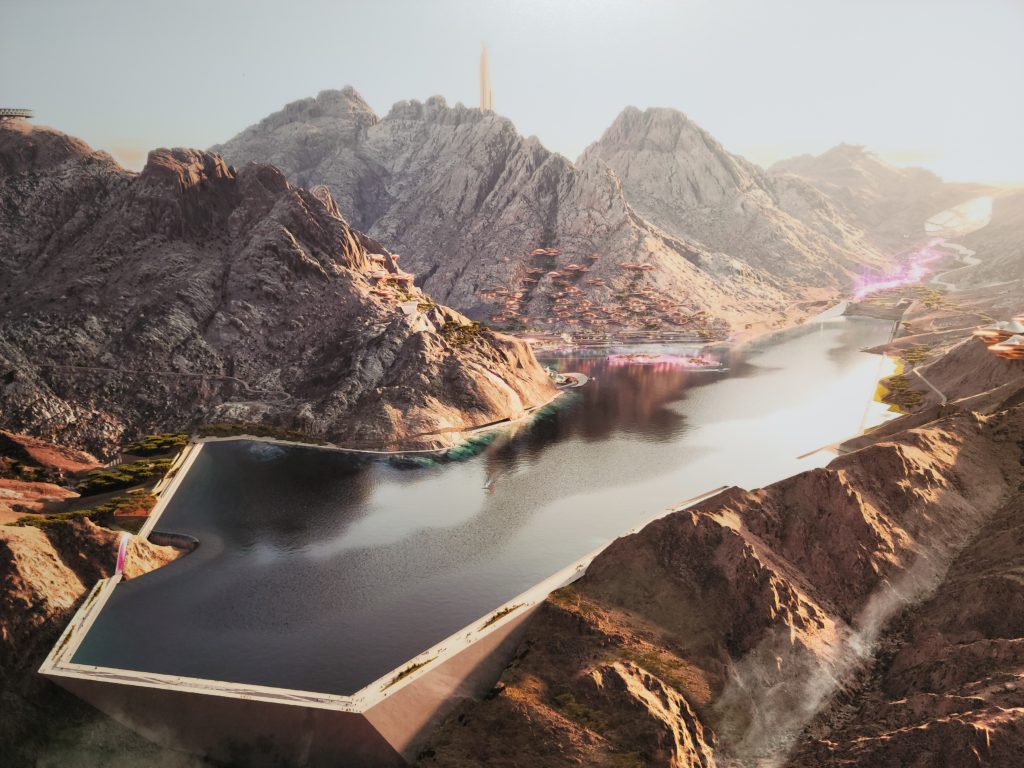Saudi Arabia continues to forge ahead with the development of its groundbreaking Neom megacity, a project that embodies the nation’s grand aspirations for a futuristic urban life. The construction in Tabuk, at the northern edge of the Red Sea, is moving forward with a significant amount of resources, reportedly moving ‘millions of cubic meters of earth and water’ weekly.
The promotional materials released in February conveyed a vision of rapid progress. Denis Hickey, the chief development officer for The Line, one of Neom’s central features, highlighted the innovative construction techniques being employed. He expressed a belief that The Line will redefine how cities harmonize with their natural surroundings and serve as a global model.
Funding is being channeled into the 26,500 square kilometer city, with development costs potentially reaching $1.5 trillion. Although The Line is projected to be completed by 2030, there have been indications of financial challenges, including a reported reliance on borrowing to fund Neom and other ambitious projects. Furthermore, initial population estimates for The Line have been adjusted, from an expected nine million residents by 2030 down to under 300,000.
Neom stands as the crown jewel of Saudi Arabia’s Vision 2030 plan, which aims to elevate the nation’s living standards, improve opportunities, and reduce its dependency on oil. The megacity is planned with several distinct regions, each with its unique characteristics and objectives.
The Line is envisaged as a city contained within two towering mirrored skyscrapers, 1640 feet in height and situated 656 feet apart. Promising a car-free, emission-free environment powered entirely by renewable energy, The Line is expected to redefine urban living. Despite the reduced population estimates, the city’s design work is advancing, with US studio Morphosis and other architectural firms contributing to its development.
Oxagon is anticipated to be an octagonal city bordering the Red Sea, featuring a sustainable port and the ‘world’s largest floating structure.’ The city planners hope to accommodate 90,000 residents within its 48 square kilometers by 2030.
Sindalah is set to be Neom’s luxury island resort, aiming to become an exclusive Red Sea destination for the yachting community and affluent travelers. It is expected to open in 2024 with a host of high-end amenities.
Trojena, Neom’s mountainous retreat, is designed to offer skiing and adventure experiences, with plans for extensive ski slopes and job creation. The goal is to attract 700,000 tourists annually by the decade’s end.
Finally, the development along the Gulf of Aqaba includes several tourism projects like Epicon, featuring ultra-luxury hotels and resorts, and various other luxury and wellness destinations nestled in the region’s stunning landscapes.
While the ambitious Neom project continues to evolve, concerns have been raised about potential ethical issues, such as the use of surveillance technology for data collection on residents.
